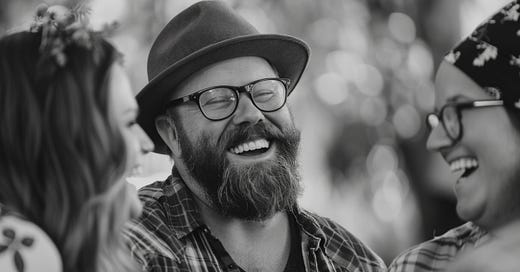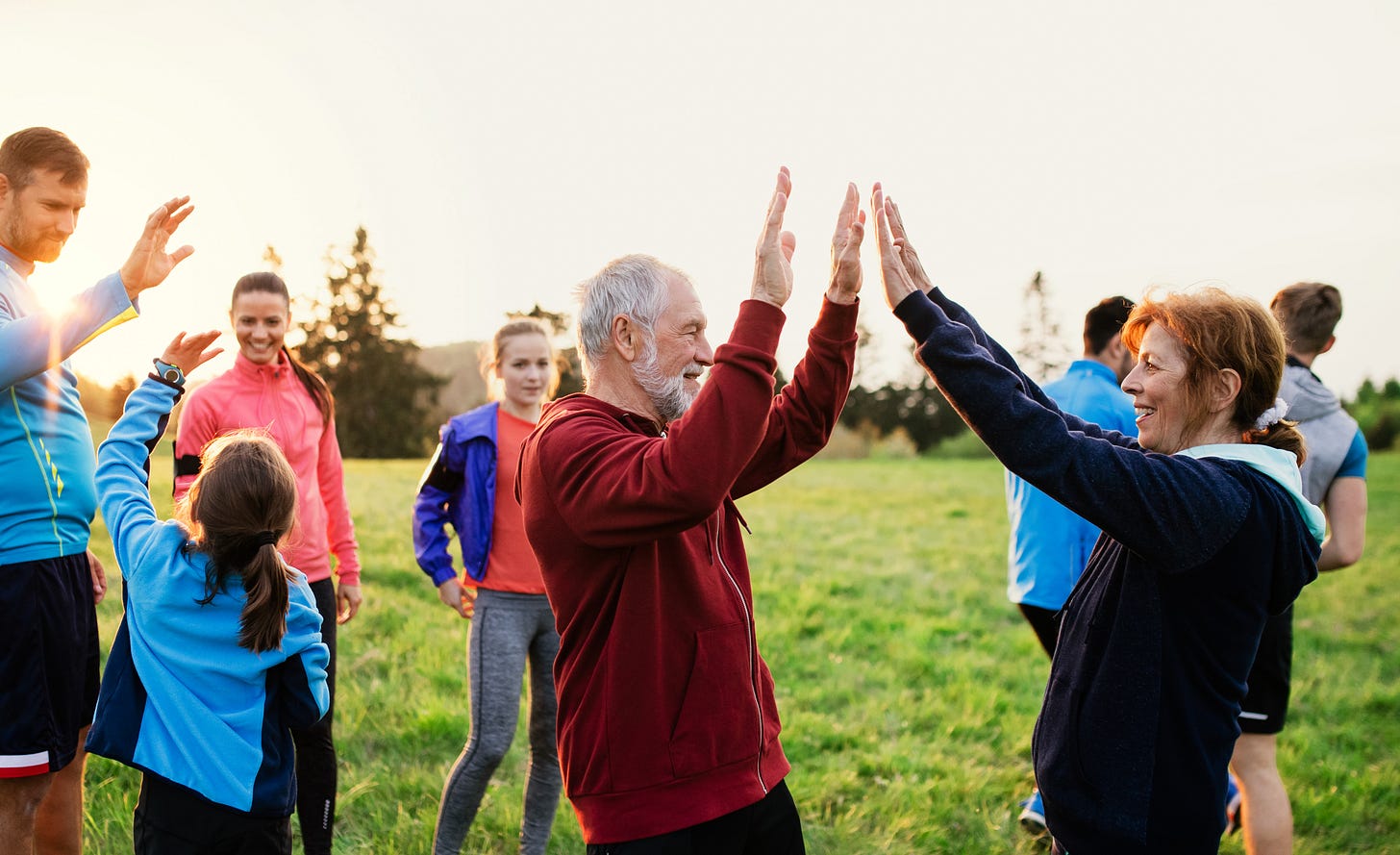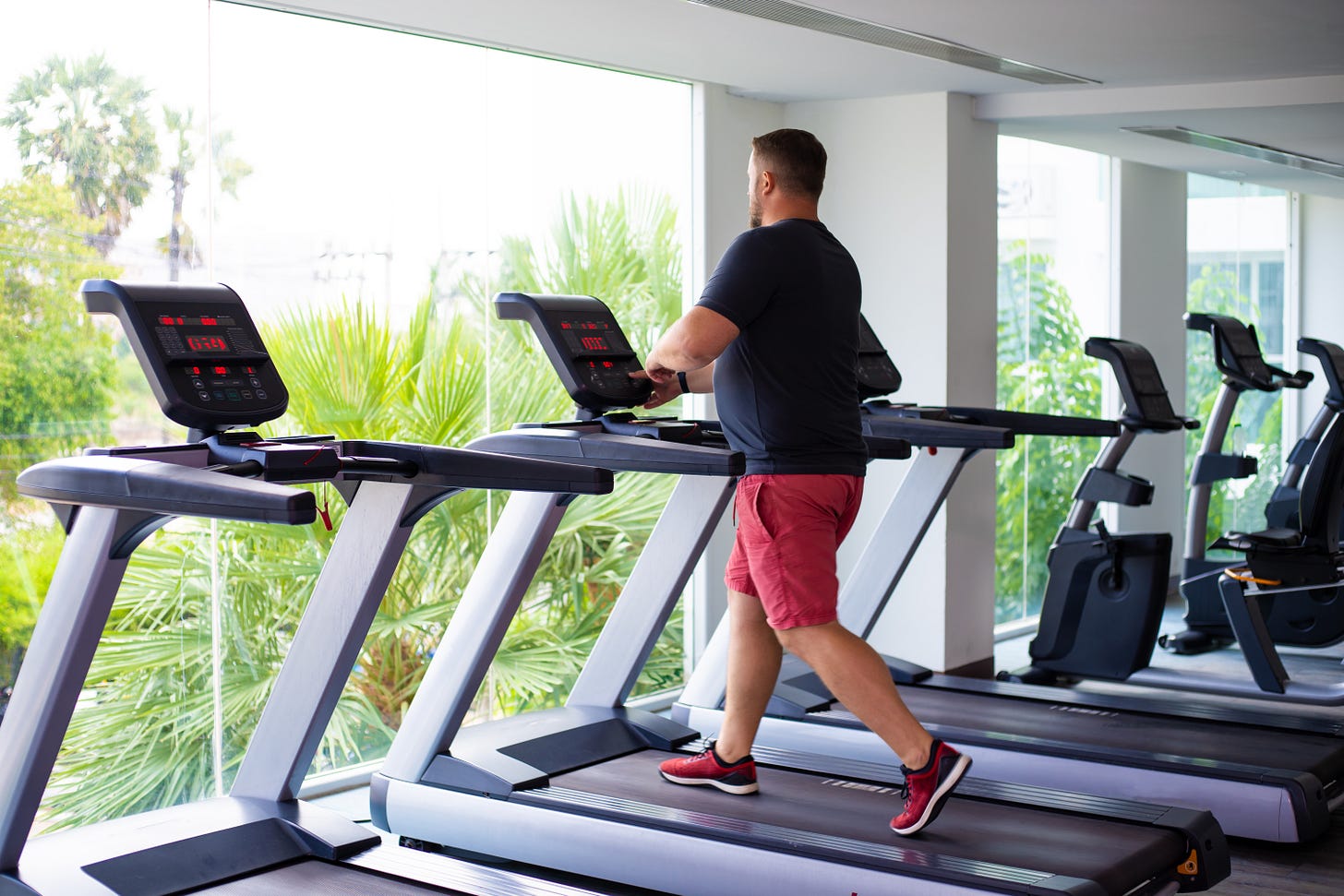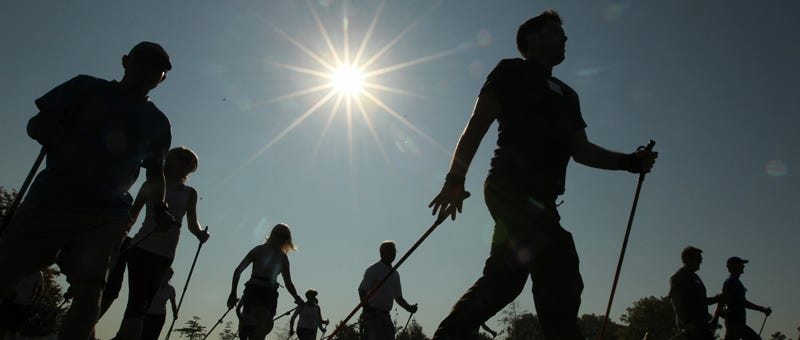“Sometimes you wanna go where everybody knows your name, and they're always glad you came…You wanna be where you can see our troubles are all the same” —Lyrics to the theme song of Cheers, by Gary Portnoy and Judy Hart Angelo
Before the digital era of smartphones, social media, and Zoom, most people divided their time between three main places: home (the first place), work (the second place), and a “third place”—a social gathering spot for connection, relaxation, creativity, or play and recreation. These third places often included traditional settings like places of worship, community centers, libraries, and social clubs. However, they could also be as informal as a favorite café, a neighborhood get-together, a local bar (like the one in Cheers), or even a public park where friends gather to play sports or simply hang out.
During my years as a stay-at-home dad, I cherished weekly meet-ups with other dads and their kids—usually at a local park or playground. While the kids played, we talked. Conversations often revolved around shared interests like sports, past adventures, and work, but they also touched on the unique challenges of being part of a relatively small group of stay-at-home dads.
These park gatherings—and other “third places”—offered more than just camaraderie and support. They “bridge ties” with people from different backgrounds and cultures, and help with loneliness making them vital to our personal and community well-being. Unfortunately, in today’s increasingly divided society, long working hours, and dependence on technology and how we interact online—those kinds of meaningful, in-person connections are becoming harder to find.
A recent study shows Americans are spending notably more time at work and at home sitting in front of their screens, a trend that started long before the pandemic. Two decades ago, political scientist, Robert D. Putnam examined in his book, Bowling Alone: The Collapse and Revival of American Community, that social institutions or third places — churches, social clubs and even bowling leagues — have been transformed for social isolation, with adverse consequences for our health and communities.
Prioritizing Work and Technology Over Human Connection
In many American suburbs today, third places—like coffee shops, bars, libraries, and parks—are often located far from where people live. Without these spaces within walking distance, having access to a car or reliable public transportation becomes essential. This poses a significant challenge for older adults, especially those with neurological or mobility issues who can no longer drive.
Add to that the convenience of connecting online—through social media, Zoom, or television—it’s easy, and sometimes necessary, for people to stay home rather than seek out in-person interaction. But virtual platforms like Facebook or Zoom can’t replicate the creative energy and emotional richness of face-to-face connections in shared physical spaces.
The decline of third places reflects more than just our reliance on technology. It also reveals deeper cultural values—America’s emphasis on individualism, consumerism, and workism—the obsession with material success and the relentless pursuit required to achieve it. Many people in this country struggle to make ends meet. Coupled with consumption habits and rising debt, they often find themselves spending more time working and managing household responsibilities, leaving little time or energy for meaningful social interactions in community spaces.
When a culture prioritizes work and technology over human connection, the motivation to engage with others fades. And if we allow technology to meet most of our basic needs—including our need for relationships—what reason is left to step outside our house and connect with others?
How About A Third Place For Fitness, Wellness and Community?
When I launched the Be Resilient Project at the start of the pandemic, my initial goal was to offer fitness classes over Zoom since in-person sessions were no longer possible. Just as important, though, was maintaining a sense of community for my mostly older adult members. While virtual workouts provided a temporary solution, they could never fully replace the deep sense of connection and camaraderie that comes from being together in person.
Today, this is clearer than ever—whether I’m leading outdoor fitness classes at a local park (ironically, one class is exclusively for men) or teaching at various community centers. The strongest example of this is my Rock Steady Boxing class for people with Parkinson’s disease. Each week, participants come together not just to exercise, but to support and cheer on fellow boxers facing similar challenges.
Creating a space where people can access both group fitness and emotional support—especially during difficult and uncertain times—remains my top priority. But shouldn’t it also be be a key focus for city governments? A community hub that fosters connection and inclusivity while helping individuals navigate health challenges can have a powerful impact on entire communities. It can enhance public health, reduce healthcare costs, strengthen social connections, and improve overall quality of life for everyone.
Imagine a place that’s not just focused on your physical health, but also makes you feel seen, supported, and truly welcome. A place where everybody knows your name, and they’re always glad you came.
America’s Lonely and Unhealthy Obsession With Exercise
Why American’s Have Fitness Wrong and What We Can Learn From Other Countries
“But are not exercise and the open air within the reach of us all?” — Walt Whitman
If you look up the word fitness, you’ll usually find two definitions. The first relates to physical health—how strong and healthy you are, or your ability to perform everyday activities with ease, regardless of age. The second, rooted in Darwinian biology, defines fitness as reproductive success—the ability of an organism to survive in challenging environments and pass on its genes.
Whether you’re human or another animal species, both definitions point to the same concept: survival of the fittest. Interestingly, neither definition mentions having “abs of steel” or a “beach body.” Yet, American fitness culture often centers on aesthetic transformation—losing weight, getting a six-pack, and chasing a certain look—rather than emphasizing functional movement, mental well-being, or long-term health. This obsession with appearance can lead to body dissatisfaction, guilt, and shame, especially when people struggle to meet these unrealistic standards.
Despite this, the American fitness industry is a multi-billion-dollar business—while the nation remains remarkably unfit. According to the CDC, 73% of U.S. adults are overweight. The Health Policy Institute at Georgetown University reports that 65 million Americans have experienced recent back pain. Even more concerning: we have shorter lifespans and experience a lower quality of life as we age compared to other developed countries.
So, if millions are spending money on gym memberships, yoga and Pilates classes, pricey exercise equipment and running shoes, why are we, as a nation, still overweight, suffering from chronic pain, and dying younger from chronic diseases?
One major reason for this disconnect is the way the fitness industry prioritizes profit over health. The “pay-to-get-fit” model is deeply embedded in American culture. As Dr. Natalia Petrzela, author of Fit Nation: The Gains and Pains of America’s Exercise Obsession, notes:
“There are endless gyms, classes, and products that promise to make you fitter — as long as you hand over your credit card.”
We busy, stressed-out Americans are easy targets for savvy marketing that knows exactly how to tap into our craving for comfort and quick fixes. It’s far more convenient to buy supplements, diet plans, or the latest piece of exercise equipment (which often ends up collecting dust in the garage) than to commit to the effort, consistency, and patience required for real lifestyle change.
We’ve been sold the idea that these products will “fix” us — that health is something we can purchase. But in reality, the true path to fitness isn’t about what we buy; it’s about what we do. It’s about incorporating movement into daily life in ways that are enjoyable and socially connected: going for a walk, bike ride, or jog with a friend, or joining others for group fitness and recreational activities, especially outdoors. This is how many other countries approach fitness — not as a product to consume, but as a way of life.
How Other Countries Practice Fitness
Many countries are healthier — and often happier — than the United States because movement is naturally woven into daily life. In these cultures, physical activity isn’t treated as a chore that you do alone or something you have to schedule at the gym. Instead, it’s simply a way to live: a means of getting around, building community, or connecting with others — often outdoors, regardless of the weather.
Take Finland, for example. The Finnish are known for their hardy, resilient mindset and embrace the idea that there’s “no bad weather, only bad clothes.” One of their most common forms of movement is Nordic walking, which uses specialized poles and serves as both transportation and recreation. Even in freezing temperatures and during the dark winter months, people continue this practice — not to burn calories, but to stay connected to nature and each other.
Japan offers another inspiring example. For decades, people of all ages gather in parks, office buildings, and schoolyards across the country to perform radio-taiso, a short group exercise routine. This three-minute, 13-move calisthenics session is accompanied by music and broadcast regularly on YouTube and national radio. It’s a communal, low-pressure way to get moving — and it shows how even just a few minutes of moderate daily movement can lead to better long-term health.
Interestingly, radio-taiso originated in the U.S. in the 1920s as a public health initiative — but it didn’t catch on. In Japan, however, it became a beloved tradition and is often cited as one reason for the country’s impressive life expectancy. It has since spread to other countries like Brazil, Peru, and the UK, where it’s being used to promote physical activity and social interaction, especially among older adults.
In contrast, the way Americans talk about exercise often centers around weight loss or making our bodies look a certain way. This individualistic, appearance-driven mindset is not only unsustainable but also discouraging. It sets people up for a cycle of failed attempts and frustration. That’s why so many people end up in health clubs, going through the motions on a treadmill, staring blankly at a screen — uninspired and disconnected. No wonder New Year’s resolutions don’t stick, yet people remain stuck in costly gym memberships.
If Charles Darwin were alive today, he might be deeply concerned about the fitness and long-term survival of our species. The generational impact of our sedentary, unhealthy habits is already visible — with more children developing lifestyle-related diseases like type 2 diabetes, once seen only in adults. It’s no coincidence that the U.S. now has a lower life expectancy than many other developed nations.
If we’re serious about improving public health, it’s time to take a cue from other countries. Let’s stop thinking of movement as a chore to squeeze into a busy schedule—and start seeing it as a joyful daily ritual, a powerful social connector, and a pathway to reclaiming our health.
And the best part? This kind of fitness doesn’t require expensive equipment or gym memberships. It costs little to nothing—just a willingness to show up, move together, and connect with others in a shared, uplifting experience.









Synchronicity. "Third Places" article by Coach Steve comes out at the same time I return to in-person class. Broke my foot and leg 1 year ago, but CRAVED being back with All of the Be Resilient Project Community!
You are a great writer, Steve. Thank you for making functional fitness an important part of my life 🙏